TEXT AND PHOTOGRAPHS BY TANBIR MIRZA-BAEG
Basingstoke, UK
On January 9, 1922, my maternal grandfather, Mohammed Abdul Latif was born in Moulvibazar, Sylhet District, Assam Province, British India. 69 years later, he passed away on August 14, 1991 in Hook, United Kingdom. During his lifetime, Nana ji was twice married, divorcing his first wife to go on and marry my grandmother. They had 7 children, including two pairs of twins, my two uncles, and the youngest, my mother. Sadly, both sets of twins, one born before my mother’s birth and one after her, would die of different circumstances.
Nana ji lived through WW2, the Partition of India, and also the Sylhet Referendum on July 6, 1947, leading up to Partition. This referendum decided whether Sylhet would stay in Undivided Assam [in India], or join East Bengal [which would then become East Pakistan]. Moulvibazar was a largely Hindu region at the time, and had voted to stay in Assam by a close majority [of 33471 against 31718]. But eventually, it, along with the rest of Sylhet, went on to join East Bengal. Nana ji’s home was in the village of Jagatshi in Moulvibazar, the name itself bearing evidence of Hindu influence. In those two and a half decades between the Partition and the Independence of Bangladesh, Moulvibazar would go from being in British India (Assam), East Bengal for a short while, East Pakistan, and then Bangladesh. I find it interesting that one can live in the same place for one’s whole life, with Nana ji in example, and yet, one’s identity can change so much.
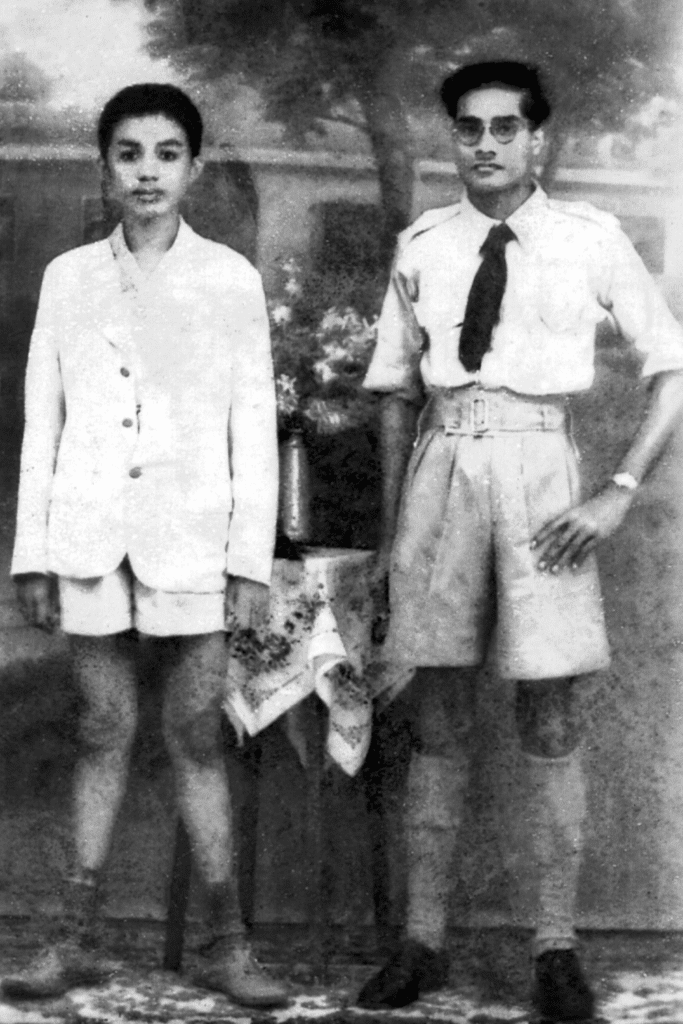

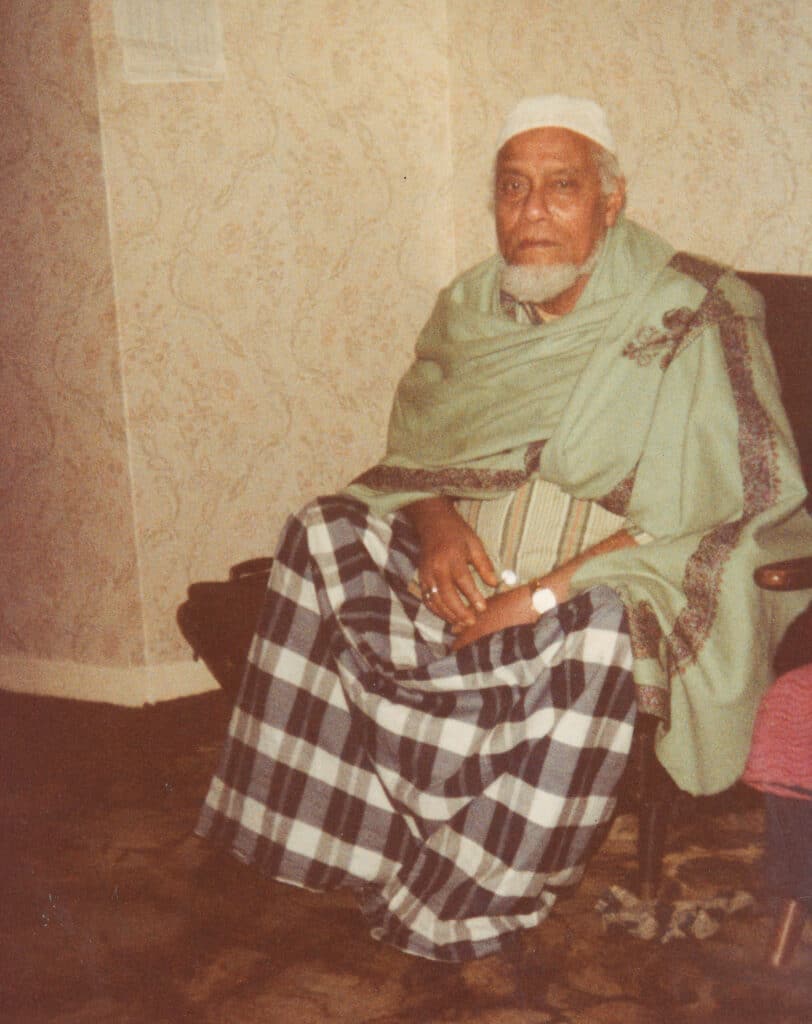
L-R – In Burma, 1940 / with Nani ji in 1950/ In the UK, 1984
Somewhen in the 60s, he travelled to the United Kingdom and more specifically London, to find work, taking on various jobs, including working in a factory that manufactured Crown Paint. Over the years, he went back and forth, before bringing his family over in 1977 and settle down in his older age. He left this world two years before I was born, and though I’d never know or see him physically, his memory was kept alive by the vibrant stories and photographs she shared with me.
*
When I was at my final year at university studying Graphic Arts, I chose to work on a project about the forgotten role of Indian soldiers in the British Army during the World Wars, as my grandfather had served as a mechanic during WW2. It was during this time that I started digitising old family photos. Seeing photographs of my grandfather from the 40s’ all the way to the 80s’ inspired me to begin a more curated archive. Studying these along with a few found objects – his glasses, hair trimmers, and Karakul hat – I thought about the life he would have lived. Upon noticing that I’d gathered these items, my mum offered me his old notebook, the naturalisation paper declaring him a British citizen, and his last British passport. From the local records office, I obtained his death certificate. All of these items together would be placed in an archival box.
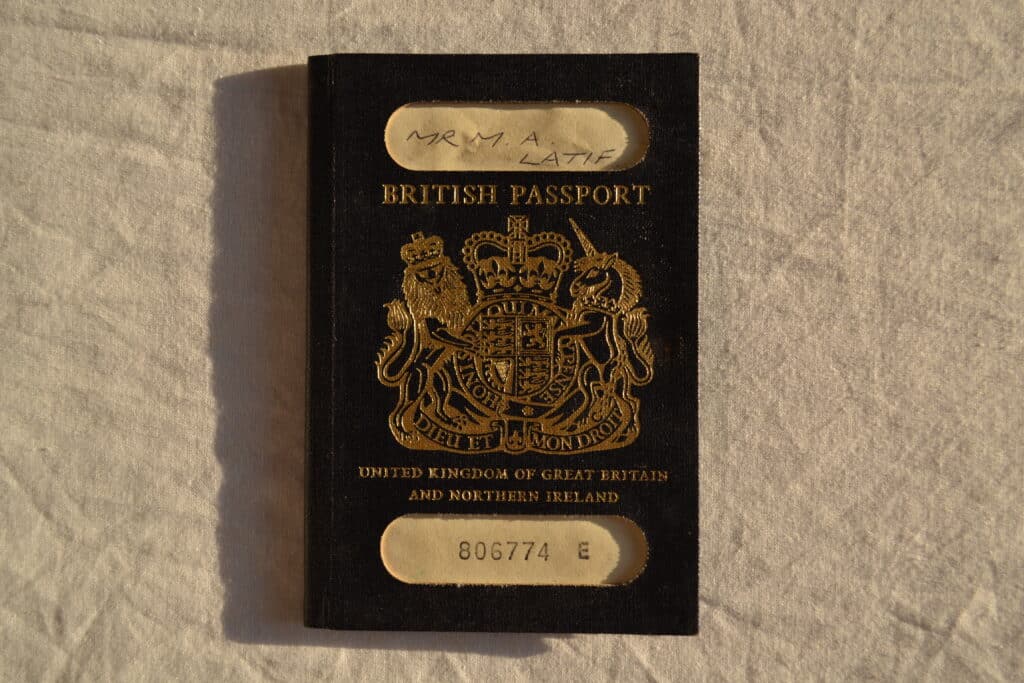
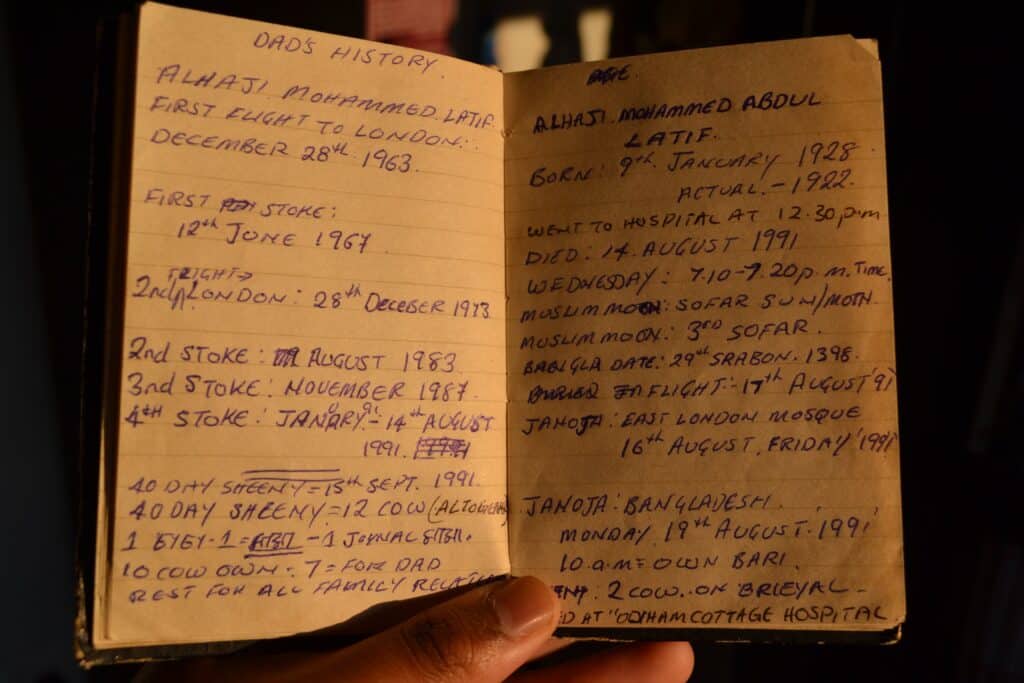
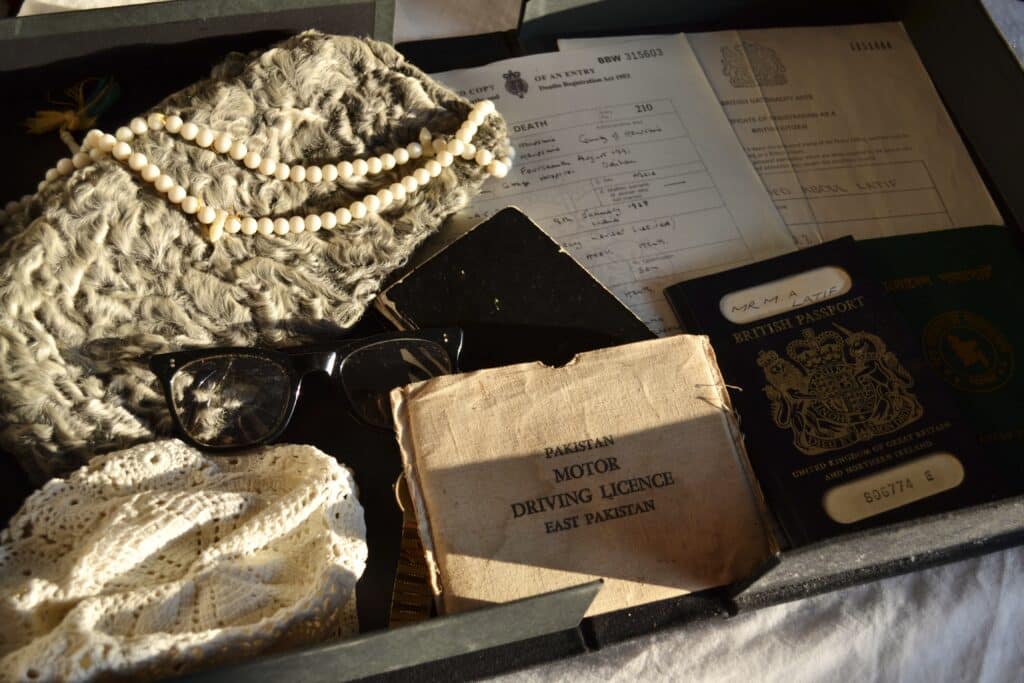
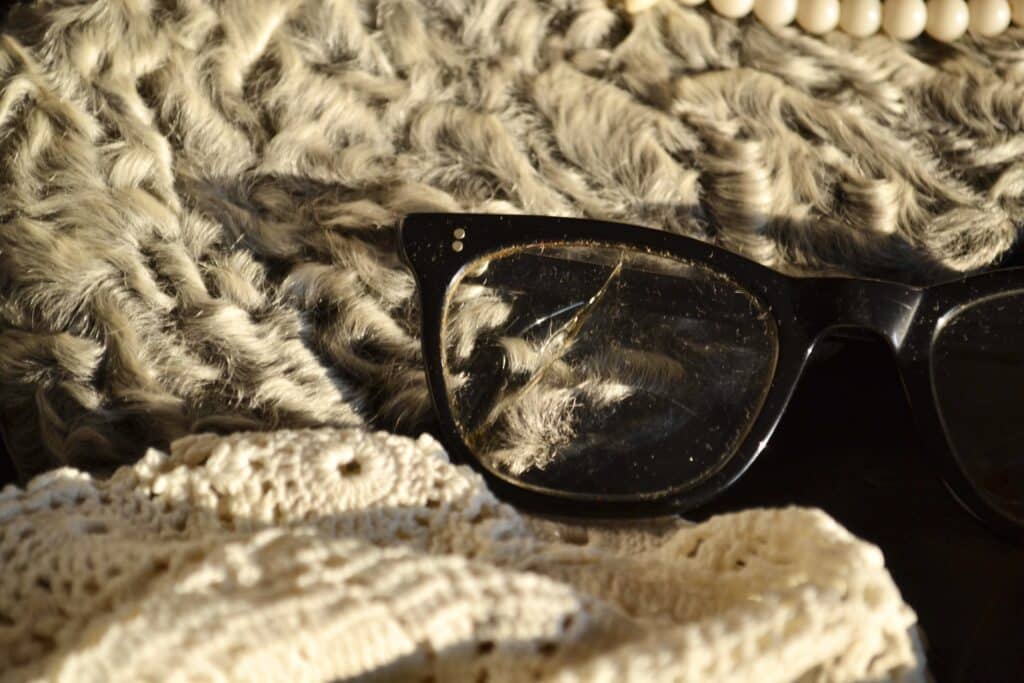
One day in 2018, I showed this box to my cousin, who said she had a driving licence that we could add. Little did I know that it would be a licence from East Pakistan, dating back to the 50s! Placing it into the archive box made me feel something I still can’t describe. From my mother, I learnt that he was an organised man, and I couldn’t help but reflect on how that very same trait had passed down from him, to her and then to me, helping to put together this rich collection from his history. A history now preserved for future generations.
*
The Motor Driving Licence was issued in the former East Pakistan (present day Bangladesh) in the city of Dhaka [spelt as Dacca up to 1983], where my mother tells me her father lived for some time. There is a temporary address of Rajarbagh Police Line, so he must have received it there. During WW2, Nana ji had worked as a mechanic in Burma (present day Myanmar), and I believe it’s what would have led him to finding a job driving a vehicle, thereby requiring a license. Since it bears the words East Pakistan, it is clear that this kind of license would have only ever existed in the 24-year period after the 1947 Partition of India in 1947 and before the Liberation of Bangladesh in 1971. And while there isn’t much information available about the document, I have in recent years seen images of a West Pakistan driving license. The interesting thing is that both these documents, despite being from similar years and one country, have different forms and structures – East Pakistan being a folded leaflet and West Pakistan, a booklet.

The driving licence is placed in a weathered, brownish grey, coarse cotton case of A6 size (105 x 149 mm or 4.1 x 5.8 inches). On the front it says ‘PAKISTAN MOTOR DRIVING LICENCE EAST PAKISTAN’. The cover of the licence inside has the same text as the casing. The document is the East Pakistan Form No. 403 (O), FORM D. It is folded into five sections, and it seems like the printed pages were pasted down onto cotton, likely to make them less fragile. The extra material provided explaining the rules of driving are not reinforced and have been reduced to stray pages.
To date the document is complicated, for there are several different dates inscribed on it. In all likelihood, the original date of the license is the 18th day of an unknown month in 1947, the same year as the Partition of India, as that is scribbled at the very top. Perhaps my Nana ji once had a licence that would let him drive in British India. This document is dated 1949, but looks like what was initially as a ‘4’ has been changed to a ‘5’, making the year 1959. It is stamped with the word ‘DUPLICATE’ and the newer date probably means that this is a renewed licence.

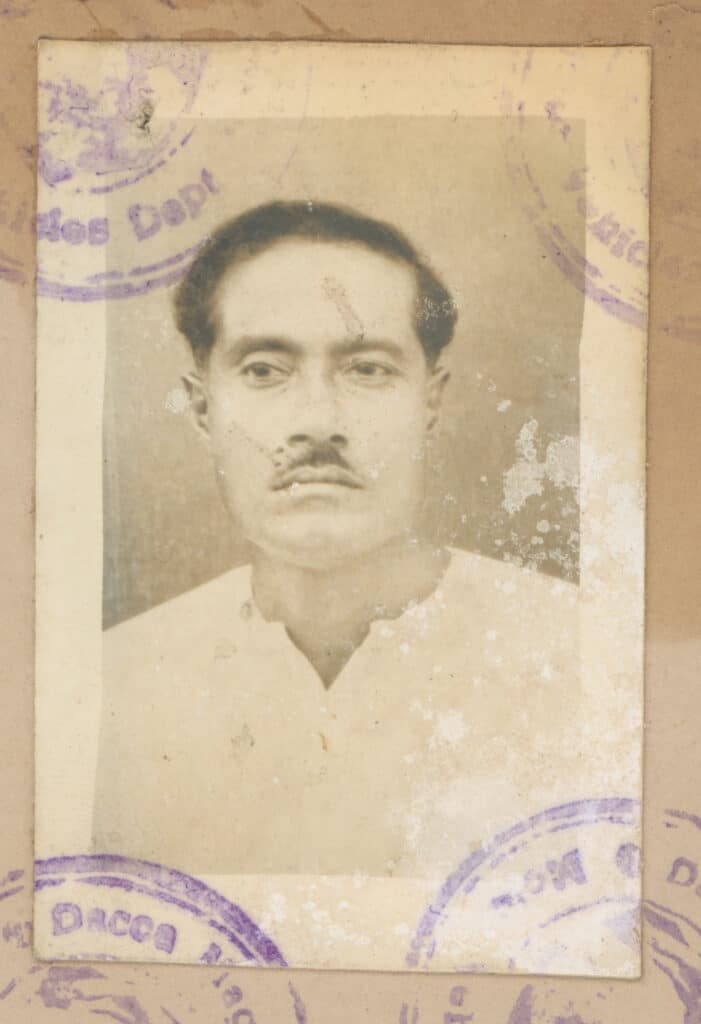
This very first section of the document holds handwritten details including Nanaji’s name: M.A Latif, his father’s name: M.D. Kalil, his permanent address of Fateh pur (the rest is illegible), and his temporary address of Rajarbagh Police Line in Dhaka. The second section includes a passport-sized photo of him, and if taken in the year that this licence was renewed, then it would put him at the age of 30-ish. In the section below the dates are written as to when he renewed the document and when it would expire. The third section details the vehicles that can be driven with this licence – Motor cycle, Motor car, Motor cab, Delivery van, Light transport vehicle, Heavy transport vehicle. To the right is handwritten ‘Sylhet Badge No. 46’, explaining the rank/role he would have at the Police Line. The bottom of this section grants the validity of this licence from 26/11/59 to 25/11/60, and is dated 26/11/1959 with the licencing authority as ‘Dacca’.
In the fourth section is printed the following text, ‘So long as this licence is valid and is renewed from time to time, the holder is authorized to drive a public service vehicle within the province of ….’ which helps to deduce that with every renewal, the document had a new date printed and/or inscribed onto it. The fifth section provides space to note every renewal. Most of this section is blank apart from one entry claiming that the licence was renewed up to 25th November 1964, and signed off by the Motor Vehicles Chief in Dacca, dated a barely-readable 1963.
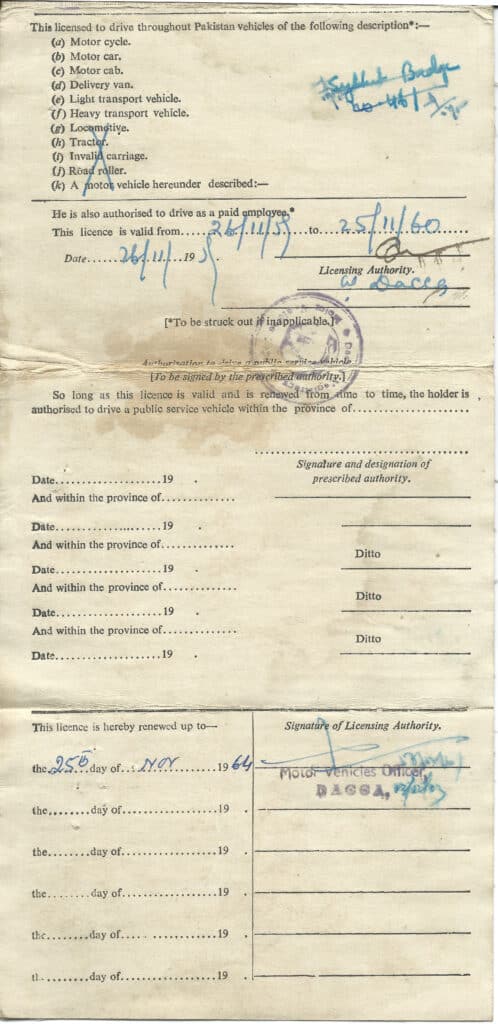
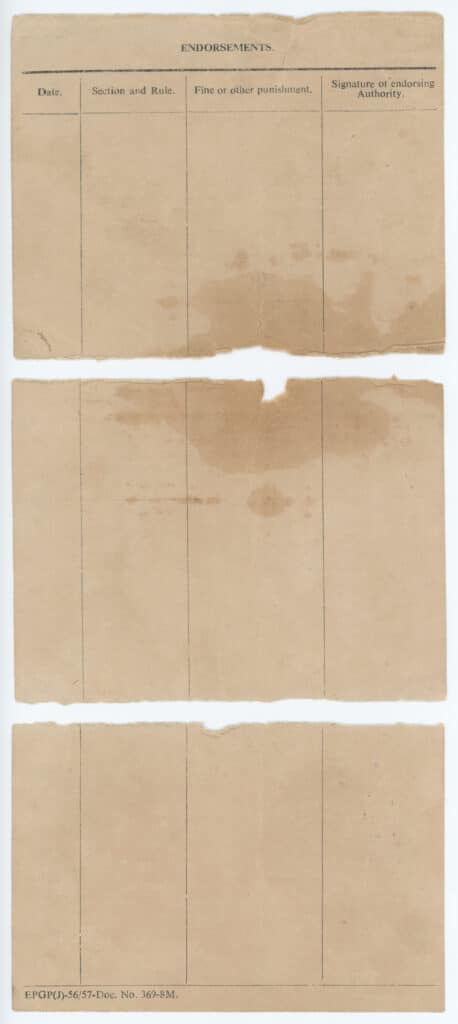
Notably on the top two sections, there is a very large splotch mark, most probably from something like oil being spilt on it. Its creases are old and well-settled, and the document itself is a dull manila colour. The included driving regulations document has seen better days, as it has now torn to pieces. Since it was printed on both sides, it wasn’t reinforced, and also bears the splotch mark in the same place, leading me to believe that something must have seeped through the whole object while in the holder.
*
While the driving licence could only have been used in the 24 years between the subcontinents’ two partitions, Nana ji would suffer a stroke in the summer of 1967, leaving him paralysed on his right leg, explaining why it wasn’t renewed after its expiration. My mum, born in October 1971 in Bangladesh, said that she had never actually seen him drive a vehicle in her lifetime.
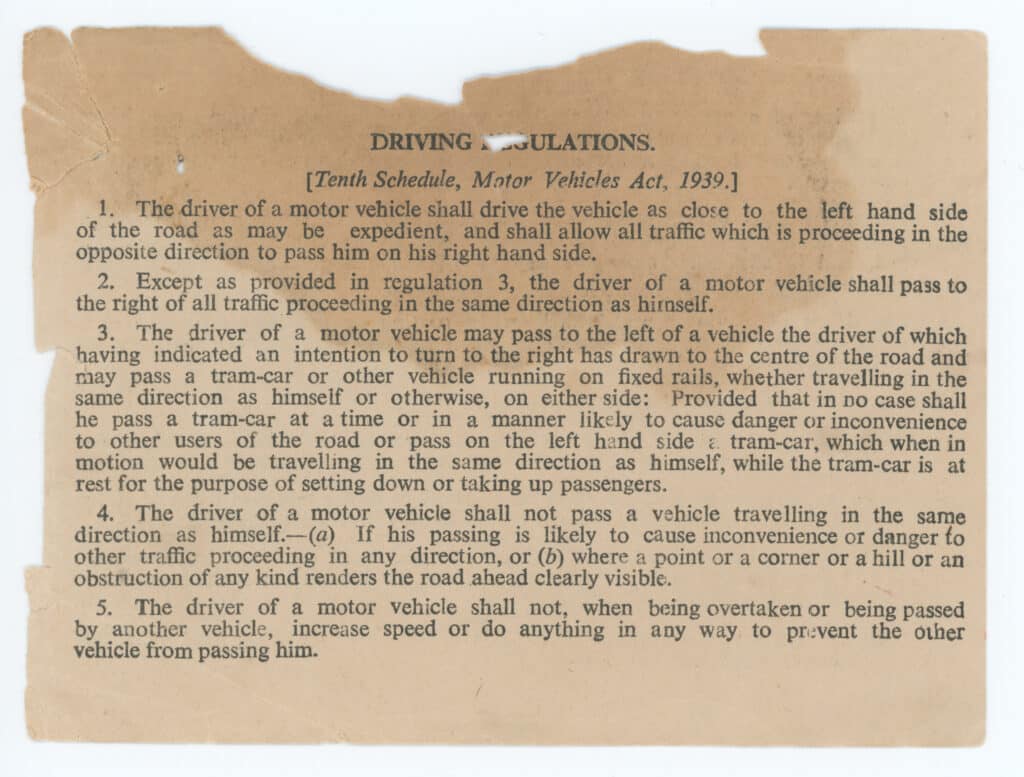
The family always kept their house in Bangladesh, and after Nana ji’s passing, Nani would consider this home, more than the homes of my parents or uncles. She would usually visit the UK for months at a time and then head back. As she grew older, the travel lessened until it ultimately stopped. When she passed away in 2015, my uncle and aunt went to Bangladesh to settle her affairs. My aunt picked up all the important papers, and it was in this collection that my cousin would find the licence, keep it in a drawer for safekeeping, and in 2018, add it to my archive. For a quarter of a century, this document was kept inside a safe in a cupboard, locked away from the world. Enclosed in the safe made sure that it was untouched by heat and dust, preserving a piece of Nana ji’s – and my – history.
While I haven’t had a physical connection to him, the gathering of these objects is a manifestation of that relationship. My identity as British-Bangladeshi connects back to the decision he took to migrate to a place so different from the one he was born and raised in, to ensure the betterment of his family. To look deep into our histories is to understand the struggles our ancestors faced, but it is also to discover the simple mundanity of their lives. The stories tracing my Bengali heritage have made me the person I am today, and I hope telling them extends the cycle of influence to others, so they may do the same.
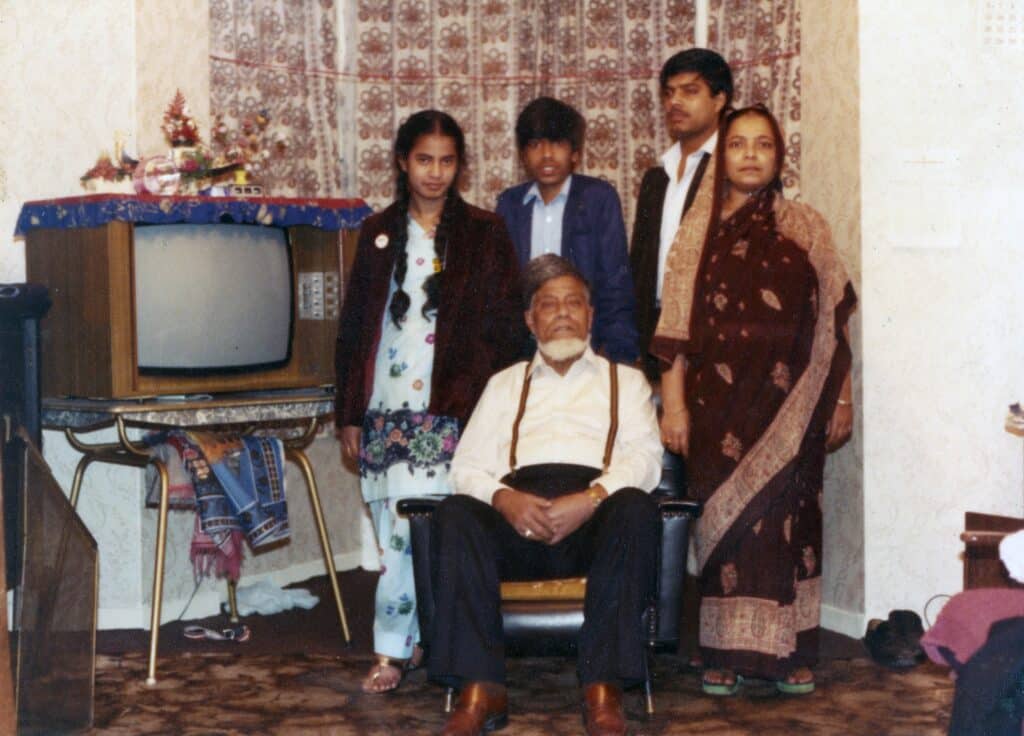

L-R – Family photo, 1983 / M.A Latif (on the chair on the right) at a party in London, 1960s
